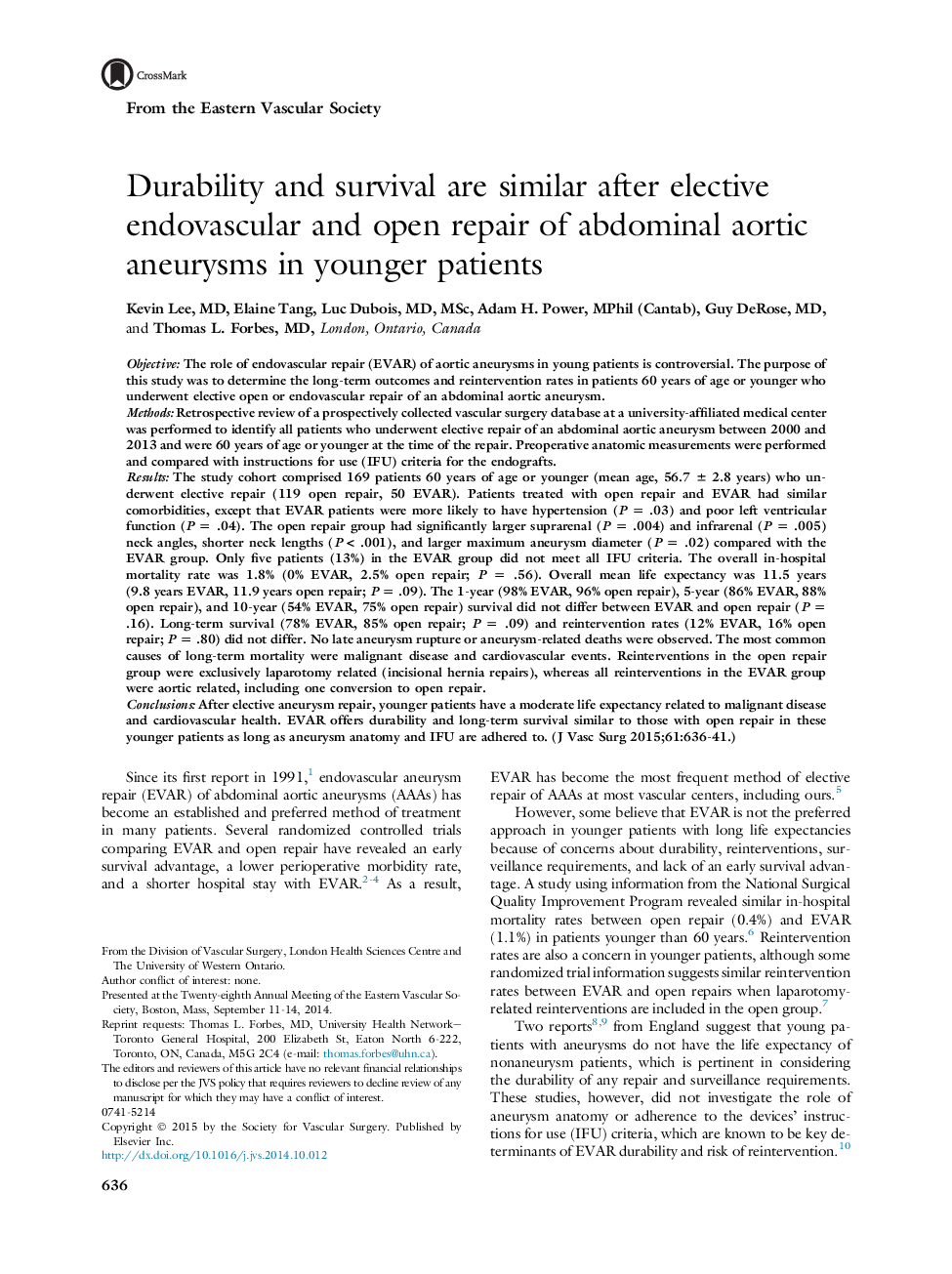| کد مقاله | کد نشریه | سال انتشار | مقاله انگلیسی | نسخه تمام متن |
|---|---|---|---|---|
| 2988630 | 1179824 | 2015 | 6 صفحه PDF | دانلود رایگان |
ObjectiveThe role of endovascular repair (EVAR) of aortic aneurysms in young patients is controversial. The purpose of this study was to determine the long-term outcomes and reintervention rates in patients 60 years of age or younger who underwent elective open or endovascular repair of an abdominal aortic aneurysm.MethodsRetrospective review of a prospectively collected vascular surgery database at a university-affiliated medical center was performed to identify all patients who underwent elective repair of an abdominal aortic aneurysm between 2000 and 2013 and were 60 years of age or younger at the time of the repair. Preoperative anatomic measurements were performed and compared with instructions for use (IFU) criteria for the endografts.ResultsThe study cohort comprised 169 patients 60 years of age or younger (mean age, 56.7 ± 2.8 years) who underwent elective repair (119 open repair, 50 EVAR). Patients treated with open repair and EVAR had similar comorbidities, except that EVAR patients were more likely to have hypertension (P = .03) and poor left ventricular function (P = .04). The open repair group had significantly larger suprarenal (P = .004) and infrarenal (P = .005) neck angles, shorter neck lengths (P < .001), and larger maximum aneurysm diameter (P = .02) compared with the EVAR group. Only five patients (13%) in the EVAR group did not meet all IFU criteria. The overall in-hospital mortality rate was 1.8% (0% EVAR, 2.5% open repair; P = .56). Overall mean life expectancy was 11.5 years (9.8 years EVAR, 11.9 years open repair; P = .09). The 1-year (98% EVAR, 96% open repair), 5-year (86% EVAR, 88% open repair), and 10-year (54% EVAR, 75% open repair) survival did not differ between EVAR and open repair (P = .16). Long-term survival (78% EVAR, 85% open repair; P = .09) and reintervention rates (12% EVAR, 16% open repair; P = .80) did not differ. No late aneurysm rupture or aneurysm-related deaths were observed. The most common causes of long-term mortality were malignant disease and cardiovascular events. Reinterventions in the open repair group were exclusively laparotomy related (incisional hernia repairs), whereas all reinterventions in the EVAR group were aortic related, including one conversion to open repair.ConclusionsAfter elective aneurysm repair, younger patients have a moderate life expectancy related to malignant disease and cardiovascular health. EVAR offers durability and long-term survival similar to those with open repair in these younger patients as long as aneurysm anatomy and IFU are adhered to.
Journal: Journal of Vascular Surgery - Volume 61, Issue 3, March 2015, Pages 636–641
